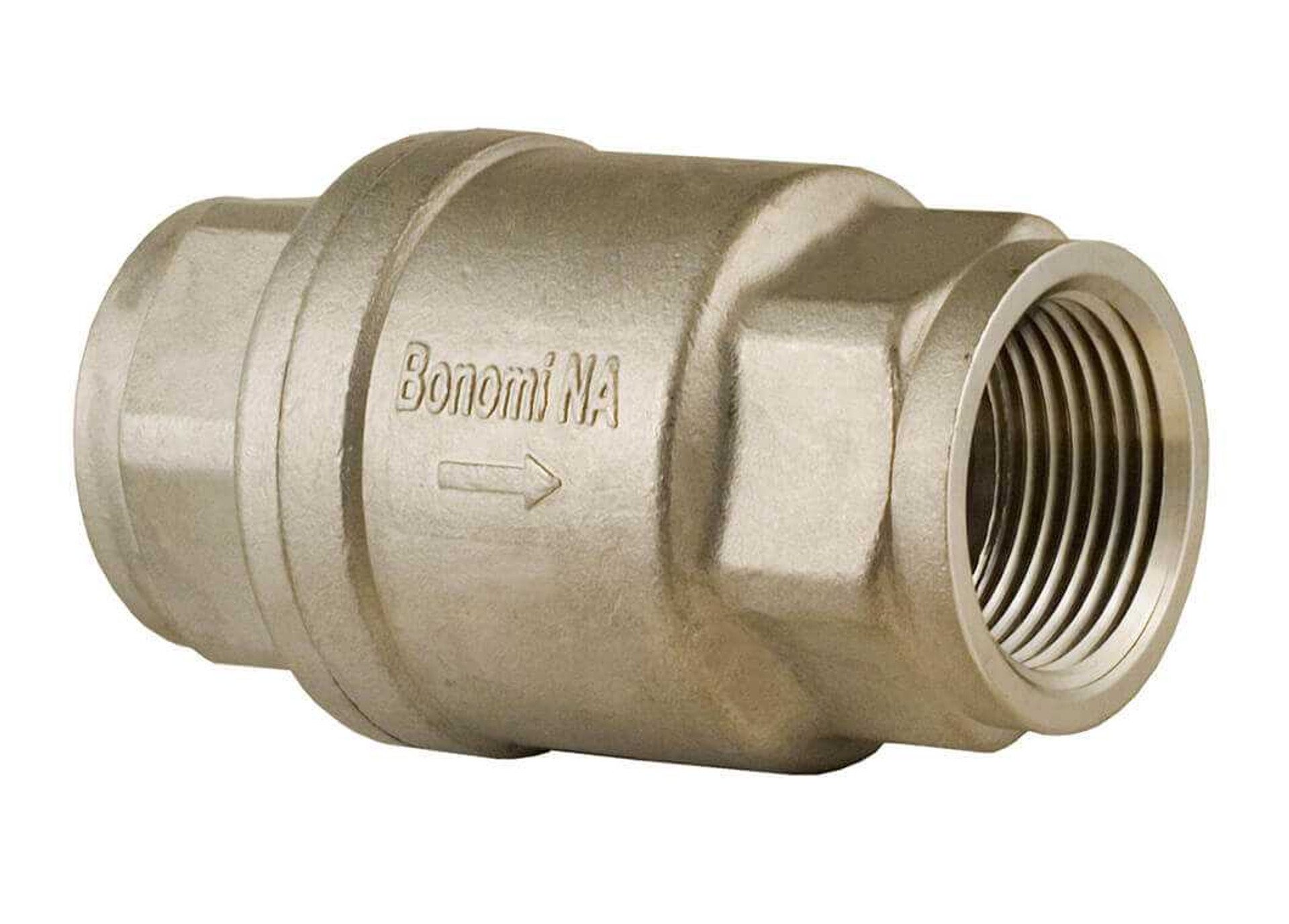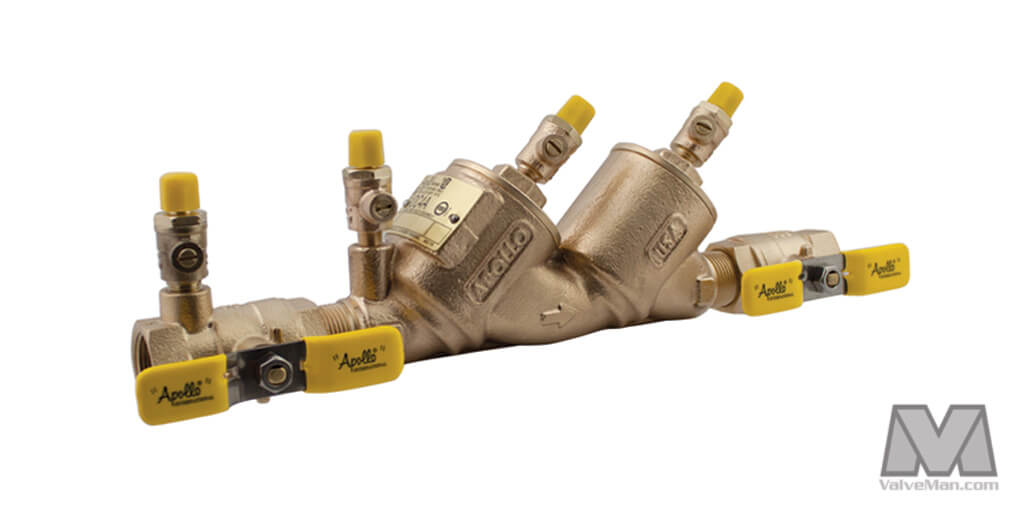Check Valve vs Backflow Preventer Comparison | ValveMan
Posted by Mark Trainer on Jul 4th 2025
If you need to make sure that fluid in your pipe system flows in one direction only, and prevent reverse flow, there's a key decision you need to make; check valve vs. backflow preventer? This article will break down the key differences between these two essential flow control devices, and help you decide which valve solution is best for your needs.
Key Takeaways
- Both check valves and backflow preventers allow fluid to flow in one direction only, and prevent reverse flow.
- Check valves are basic one-way valves that allow fluid to flow in a single direction.
- Backflow preventers are advanced flow control devices, often incorporating multiple check valves, pressure control and pressure relief components.
- Backflow preventers offer multiple layers of failsafe mechanisms.
- Check valves are suited to low-risk applications, while backflow preventers are typically installed in high-risk applications, such as protecting potable water systems from contamination.
What are Check Valves and How Do They Work
A check valve is a type of valve used in piping systems to control flow direction and prevent backflow. Check valves operate automatically. Designed with internal components such as a disc, flap, or ball element, check valves open when the system pressure reaches a set threshold, known as the cracking pressure, and close automatically once the pressure drops and flow begins to reverse.
By allowing media to move freely in one direction only, check valves protect pumps, process equipment, and pipe systems from damage, leaks, or contamination. Their automatic operation makes check valves a reliable safeguard in piping systems where maintaining a steady, one-way flow is critical.

Check Valve Types
There are many different types of check valves. Some of the most common types include:
Swing Check Valves
Swing check valves are one of the most basic types of check valves (from a mechanical perspective at least). They contain a simple hinged door or disc that can only open in one direction, effectively preventing flow in the opposite direction. However, debris can interfere with the door operation, causing it to get stuck open or partially open, potentially resulting in bi-directional flow or reverse flow. Swing check valves are commonly used in water and waste water applications, an example of their use would be on fire sprinkler systems.
Ball Check Valves
Ball check valves use a ball-shaped closure element, that moves up and down within the valve chamber to allow or restrict flow. Ball check valves are simple and cost effective, suited to low pressure applications, as well as fluids containing solids.
Double Door Check Valves
Double door or dual plate check valves employ a split-disc design with two hinged disc. They are similar to swing type check valves but instead of a single valve door, they have two half-doors hinged about the center of the valve. These check valves offer good sealing, fast response, and are suitable for a wide range of applications.
Other common check valve types include lift check valves and spring check valves (which are sometimes used synonymously), tilting disc check valves, diaphragm check valves and nozzle check valves.
What are Backflow Preventers and How Do They Work
Backflow preventers are plumbing devices designed to stop contaminated water from flowing backward into a clean water supply. They ensure that water only flows in one direction, protecting drinking (potable) water from pollution and contamination.
Backflow preventers are used in commercial buildings, irrigation systems, fire sprinkler lines, industrial facilities, and many other applications where there’s a risk of flow mixing between potable and non-potable water pipelines. In residential settings, they’re often installed where outdoor irrigation lines, boilers, or secondary water sources connect to the main water line. They’re typically placed near the water meter or the main shutoff valve to prevent any backflow from reaching the municipal water supply.
Backflow preventers are often required by local regulations, to prevent contamination and ensure public safety. Examples include use in fire sprinkler systems, to prevent contamination and ensure public safety. Another example is for irrigation use, to protect against contaminants like chemicals, pesticides, fertilizers, and other pollutants that could enter the drinking water supply.
Follow this link if you'd like to learn more about backflow preventers.

Backflow Preventer Types
There are several types of backflow preventers available. The list below is categorized based on the level of protection offered, ranging from the basic back-siphonage protection provided by atmospheric vacuum breaker (AVB) valves, to the highest degree of protection provided by reduced pressure zone (RPZ) valves.
Atmospheric Vacuum Breaker (AVB)
AVB valves are a type of backflow preventer that works well for low-hazard applications. These devices work by allowing air into a water line to prevent back-siphonage when water pressure drops. Under normal conditions, the valve sealing disc or poppet valve is held closed by water flow, preventing air from entering. When pressure decreases, the disc opens, and outside air enters to fill the vacuum and prevent a siphon from forming.
Pressure Vacuum Breaker (PVB)
PVB valves are more robust than AVB systems, and work best for low to medium-risk applications, such as irrigation systems. While their operating principle is similar to atmospheric vacuum breakers, pressure vacuum breakers incorporate spring-loaded check valves, an outlet shutoff valve and test valves, allowing for maintenance and testing of the valve, and providing a more robust backflow prevention solution.
Double Check Valve Assembly (DCVA)
DCV assemblies consist of two independent check valves in series. During normal operation with flow int he desired direction, both valves are open. If backflow begins, both valves close and stop reverse flow. If one of the valves fails to close, the other valve acts as a backup. This adds redundancy to the backflow prevention device. Double check valve assemblies are a better choice than atmospheric and pressure vacuum breakers for higher risk applications, such as fire sprinkler systems, which mix the public water supply and fire-fighting chemicals.
Reduced Pressure Zone Assembly (RPZA)
RPZ assemblies are more advanced than the other options we've discussed. These devices work by creating a protection zone of lower pressure between two check valves, effectively preventing backflow. If the pressure in the supply line drops too low, or contaminated water pressure gets too high, a relief valve within the low pressure zone opens, discharging water to a drain, creating an air gap and closing both check valves.
An RPZA system is ideal in applications where it's vital to prevent contaminated water from entering your main water supply line. It consists of several components, including:
- Dual check valves, to ensure that the system prevents backflow even if one check valve fails
- A pressure relief valve, which maintains the low pressure zone in the assembly
- A shutoff valve on both the inlet and outlet, for testing purposes
- Test cocks, to verify proper operation of the valve
Comparing Applications of Check Valves vs. Backflow Preventers
Check valve and backflow preventer applications differ significantly, primarily due to the level of protection they offer. Check valves are used in low-risk applications like preventing equipment damage from reverse flow. Backflow preventers are used in high-risk applications, such as safeguarding systems from contamination.
Check Valve Applications
- Equipment protection: Used on the discharge side of pumps and compressors to prevent backflow and reverse rotation, which can damage rotating equipment.
- HVAC, hydraulic and pneumatic systems: Control the flow of refrigerants, oil, water and air, ensuring proper circulation and preventing damage to components like chillers and heat exchangers.
- Plumbing: Prevents water draining out of a system, and can prevent pumps from losing their prime.
- Water treatment: Prevent treated water from flowing back into the untreated water supply.
Backflow Preventer Applications
- Protecting public water supply: Installed in commercial and residential plumbing systems to prevent contaminated water from flowing back into the clean drinking water system.
- High-risk environments: Required in places with a higher risk of hazardous waste contamination, such as hospitals and industrial facilities.
- Fire sprinkler systems: Used to ensure that the chemical suppressants and dosing agents used for fire suppression systems don't flow back into clean water systems.
- Irrigation systems: Prevent contaminated water, which may include concentrated fertilizer or other chemicals, from mixing with municipal water systems.
- Note that backflow preventer installation may be mandated by regulation, at points where potable water may be contaminated.
Choosing the Right Device for Your System
Selecting the right device for your plumbing system involves considering several factors:
- Compliance with applicable codes and regulations
- The specific needs of your system
- Properties with irrigation systems, wells, or fire fighting systems typically require backflow preventers, to prevent contaminated water from entering the potable water supply
Different types of valves are suited to different applications. For example, spring check valves can function effectively in both vertical and horizontal orientations, making them versatile options for various plumbing systems. However, more complex systems, such as a bulk pipeline, may require nozzle type check valves to aid in surge prevention. This is a useful reference if you'd like to know about common check valve mistakes to avoid.
When choosing a backflow prevention device, understanding potential contamination risks and selecting a device that provides adequate protection is essential. Proper installation and regular maintenance are also critical to ensure that the device functions correctly and maintains water quality. By selecting the right device and following established best practices, you can safeguard your pipe system and ensure a safe and reliable potable water supply for everyone.
In Closing
Understanding the key differences between check valves and backflow preventers, as well as their specific applications, is crucial for maintaining safe and reliable pipe and plumbing systems. While check valves are suitable for preventing reverse flow in many applications, backflow preventers offer superior protection against contamination, making them essential for potable water safety, or other applications where cross-contamination poses a safety or health risk.

 888-825-8800
888-825-8800








